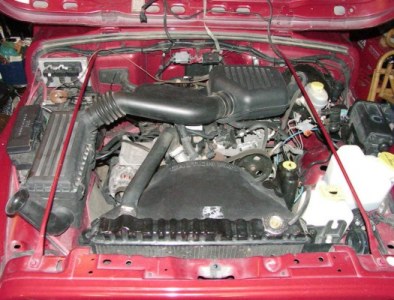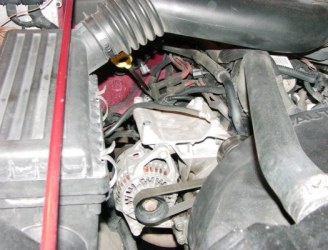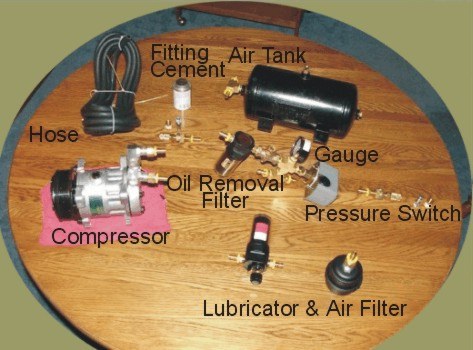
OnBoard Air Installation InstructionsBefore we get started, you must explore Brad Kilby's OnBoard Air website. I highly recommend OnBoard Air for your primary source for parts. Although, if you are on a budget, you may find other sources for some of the parts. I opted to use OnBoard Air products exclusively because I wanted the finished job to look as factory as possible.
Let's begin.
|
Here's what we had to start with. Specifications: Note the open area above the alternator which is where the factory air conditioning compressor normally is installed. On this Jeep, there is no factory air so installation will be made a little easier, in that, we will install a somewhat factory Sanden air conditioning compressor in the same place as the factory model.
|
|
|
|
Here are my starting supplies. Because I am using a Sanden compressor, it is necessary that I use a lubricator before the air enters the compressor. Then, I installed an oil removal filter after one-way valve so that I could run air tools without damage if I so desired. I don't like Teflon tape so I used some slow drying cement that I purchased at Home Depot in the plumbing department. I highly recommend using the joint cement. If you look at my air distribution schematic you will see that there are numerous joints any of which can cause a leak. Using the joint cement proved successful because upon completion of the project I had NO leaks. Pretty incredible if you ask me.
Special note: Rotary compressors will leak their reservoir fluid into the air system quite rapidly especially when the pressure exceeds 80-90 psi. This is due to the fact that only one side of the system is pressurized, that is, the discharge side of the compressor, the side that is putting out the air. The suction side, is normally pressurized with freon, however, in an OnBoard Air system, the suction side has negative pressure because there is no freon or pressure on that side of the compressor. So, what you will notice, is that the oil removal filter will fill up very quickly. Question? How do I solve this problem? Answer: You don't. You can only add an oil return line from the oil removal filter to the compressor and watch the filter level frequently. Kilby has such a kit. Buy it.
|

 Here is a close-up shot of the area where we will install Kilby Enterprises OnBoard Air conversion bracket to bolt a Sanden air conditioning compressor. Note the serpentine belt. The OnBoard Air kit comes complete with the new serpentine belt. The kit is WELL worth the expense. It makes the installation trouble free and takes little more than 30 minutes to install the compressor complete with the new belt. The new system follows the factory serpentine belt configuration with air conditioning installed.
Here is a close-up shot of the area where we will install Kilby Enterprises OnBoard Air conversion bracket to bolt a Sanden air conditioning compressor. Note the serpentine belt. The OnBoard Air kit comes complete with the new serpentine belt. The kit is WELL worth the expense. It makes the installation trouble free and takes little more than 30 minutes to install the compressor complete with the new belt. The new system follows the factory serpentine belt configuration with air conditioning installed.